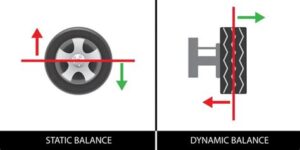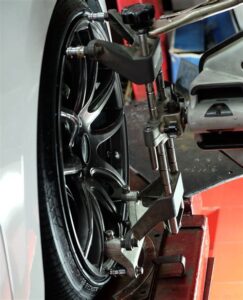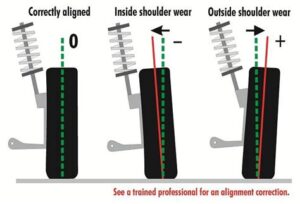In today’s DIY culture, car maintenance has taken center stage, empowering vehicle owners to tackle repairs on their own. One essential aspect of proper car upkeep is alignment, which can significantly affect handling and tire longevity. Introducing the DIY Car Alignment Tool—a cost-effective solution that allows you to achieve precise alignment without professional assistance. In this article, we will explore everything you need to know to build your own car alignment tool, from necessary materials to a step-by-step guide. Additionally, we’ll discuss the benefits of using this tool at home, common pitfalls to avoid, and how to maintain it for long-lasting efficiency. Whether you’re a seasoned DIY enthusiast or a novice, this guide is designed to help you keep your vehicle in top shape and save on costly repairs. Let’s get started on your path to more hands-on car care!
What You Need To Build A DIY Car Alignment Tool
To create a diy car alignment tool, you’ll need some essential materials and tools. Below is a comprehensive list that will guide you through the process of gathering what you require for making this tool efficiently:
| Item | Description |
|---|---|
| Measuring Tape | A long measuring tape to measure distances between your wheels. |
| Wood or Metal Pipe | Used for creating a straight edge. Ensure it is long and straight enough for your vehicle. |
| Protractor or Angle Finder | To measure the camber and caster angles. |
| Level | To ensure your alignment tool is level during measurements. |
| Jack and Jack Stands | For lifting the vehicle safely while you perform the alignment. |
| Safety Gear | Including gloves and goggles, to ensure safety during the process. |
Once you have gathered these materials, you are well on your way to constructing your own diy car alignment tool. This will empower you to perform essential alignment tasks conveniently at home.
Step-By-Step Guide For Creating Your DIY Car Tool
Creating a diy car alignment tool can be an enjoyable process that empowers you to maintain your vehicle effectively. By following these steps, you will successfully build your own alignment tool without breaking the bank.
- Gather Your Materials:
- A pair of straight edges or sturdy boards that are at least the length of your vehicle’s wheel base
- A measuring tape
- Some adjustable clamps
- Marking paint or chalk
- A level
- Prepare the Straight Edges:
Ensure that the straight edges are free from warps or bends. These will serve as your primary measurement guides, so their accuracy is essential.
- Position the Tool:
Place the straight edges parallel to the wheels of your vehicle, ensuring that they are levelled with the use of your level. This step is crucial for accurate alignment measurements.
- Clamping the Edges:
Secure the straight edges in position using the adjustable clamps. This will help maintain the alignment throughout the measurement process.
- Measure the Distance:
Using your measuring tape, measure the distance from the front wheel’s edge to the straight edge on both sides of the vehicle. Record these measurements for comparison.
- Mark the Wheels:
Use marking paint or chalk to indicate the optimal position on the tires based on your measurements. This visual reference will guide adjustments if necessary.
- Adjust the Vehicle’s Alignment:
If the measurements show discrepancies, adjust the alignment by modifying the tie rods or camber settings based on the specs for your vehicle type.
- Recheck Alignment:
After making the necessary adjustments, repeat the measurement process to ensure that the wheels are now correctly aligned.
With your newly created diy car alignment tool, you can efficiently manage your vehicle’s alignment needs, boosting performance and safety on the road.
Benefits Of Using A DIY Car Alignment Tool At Home
Utilizing a diy car alignment tool at home presents numerous advantages for car enthusiasts and everyday drivers alike. Here are some key benefits:
- Cost-Effective: Building your own diy car alignment tool can save you money compared to professional alignment services. This is particularly beneficial if you are performing alignments regularly.
- Convenience: Having a diy car alignment tool on hand means you can perform alignments at your convenience without needing to make appointments at a garage.
- Precision: With a DIY tool, you can achieve accurate alignments tailored to your specific vehicle. This ensures better handling and tire longevity.
- Learning Experience: The process of creating and using a diy car alignment tool allows you to gain knowledge about your vehicle’s suspension system and enhances your overall mechanical skills.
- Flexibility: A DIY tool can be adjusted or modified based on your needs, allowing you to customize your alignment setup for different vehicles.
- Satisfaction: Successfully assembling and using a diy car alignment tool can be a fulfilling experience, providing a sense of accomplishment and confidence in your car maintenance skills.
A diy car alignment tool not only offers practical benefits such as cost savings and convenience but also enhances your skills while ensuring the optimal performance of your vehicle.
Common Mistakes When Using Your DIY Car Alignment Tool
Using a diy car alignment tool can save you time and money, but it requires careful execution to achieve precise results. Here are some common mistakes to avoid during the process:
| Mistake | Description | Solution |
|---|---|---|
| Incorrect Measurements | Not measuring accurately can lead to significant alignment issues. | Double-check all measurements using a level and measuring tape to ensure accuracy. |
| Improper Setup | A poorly set up alignment tool can give inaccurate readings. | Ensure the tool is correctly positioned relative to the vehicle’s specifications. |
| Neglecting Tire Pressure | Inconsistent tire pressures can affect alignment readings. | Check and adjust tire pressures before performing the alignment. |
| Ignoring Surface Level | Performing alignment on an uneven surface can yield faulty results. | Always work on a flat, level surface to ensure the accuracy of your diy car alignment tool. |
| Forgetting to Test Drive | Not test driving after adjustment can lead to missed alignment issues. | Take your vehicle for a test drive to confirm the alignment settings are effective and stable. |
Avoiding these common mistakes will ensure that your DIY car alignment tool functions correctly and provides you with optimal results. Always remember to take your time during adjustments and consult manufacturer guidelines for your specific vehicle model.
How To Maintain Your DIY Car Alignment Tool For Longevity
Maintaining your diy car alignment tool is crucial for ensuring its longevity and accuracy. Here are some effective tips to help you keep your tool in top shape:
By following these maintenance tips, you can ensure that your diy car alignment tool remains effective for years to come. Proper care will not only improve its performance but also save you money on replacements.
Frequently Asked Questions
What is a DIY car alignment tool?
A DIY car alignment tool is a homemade device that helps you check and adjust the alignment of your vehicle’s wheels to ensure proper handling and reduce tire wear.
What materials do I need to create a DIY car alignment tool?
Common materials include a laser level or string, measuring tape, protractor, and some sturdy boards or metal rods for creating a frame.
How does a DIY car alignment tool work?
The tool works by measuring the angle of the wheels in relation to the vehicle’s specified alignment settings, allowing you to determine if adjustments are needed.
Can I perform wheel alignment myself using this tool?
Yes, with a DIY car alignment tool, you can perform basic wheel alignment adjustments yourself; however, for precision and safety, professional alignment is recommended if unsure.
What are the benefits of using a DIY car alignment tool?
Using a DIY car alignment tool can save you money, enhance your understanding of vehicle mechanics, and help you maintain your car’s performance and longevity.
How can I ensure accurate measurements with the DIY tool?
To ensure accuracy, make sure your vehicle is on a level surface, use reliable measuring tools, and double-check your measurements before making any adjustments.
Are there any risks involved in DIY car alignment?
Yes, improper alignment can lead to uneven tire wear, reduced handling, and potential safety hazards. It’s vital to understand your vehicle’s specifications before making adjustments.





